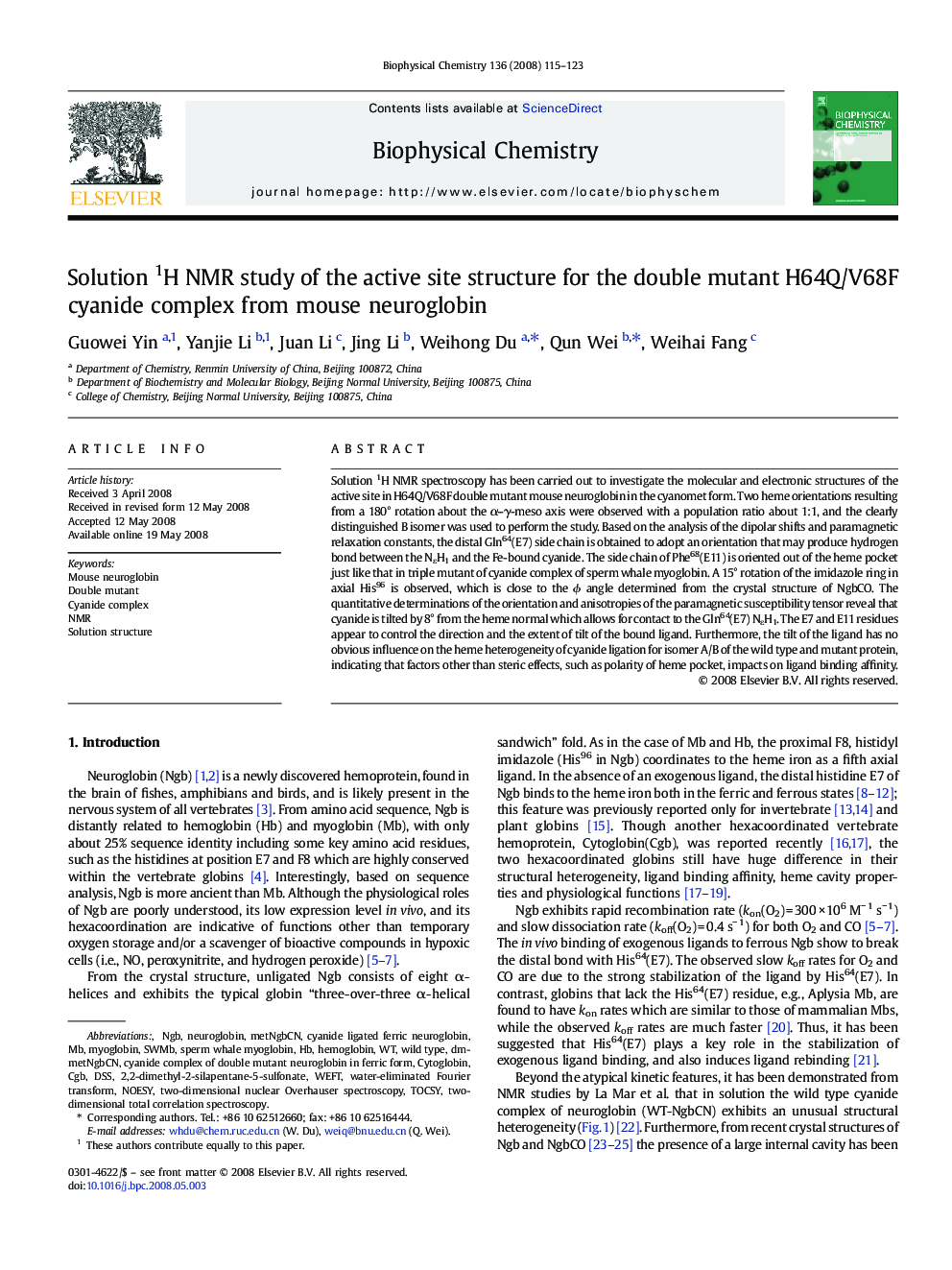| Article ID | Journal | Published Year | Pages | File Type |
|---|---|---|---|---|
| 5371824 | Biophysical Chemistry | 2008 | 9 Pages |
Solution 1H NMR spectroscopy has been carried out to investigate the molecular and electronic structures of the active site in H64Q/V68F double mutant mouse neuroglobin in the cyanomet form. Two heme orientations resulting from a 180° rotation about the α-γ-meso axis were observed with a population ratio about 1:1, and the clearly distinguished B isomer was used to perform the study. Based on the analysis of the dipolar shifts and paramagnetic relaxation constants, the distal Gln64(E7) side chain is obtained to adopt an orientation that may produce hydrogen bond between the NεH1 and the Fe-bound cyanide. The side chain of Phe68(E11) is oriented out of the heme pocket just like that in triple mutant of cyanide complex of sperm whale myoglobin. A 15° rotation of the imidazole ring in axial His96 is observed, which is close to the Ï angle determined from the crystal structure of NgbCO. The quantitative determinations of the orientation and anisotropies of the paramagnetic susceptibility tensor reveal that cyanide is tilted by 8° from the heme normal which allows for contact to the Gln64(E7) NεH1. The E7 and E11 residues appear to control the direction and the extent of tilt of the bound ligand. Furthermore, the tilt of the ligand has no obvious influence on the heme heterogeneity of cyanide ligation for isomer A/B of the wild type and mutant protein, indicating that factors other than steric effects, such as polarity of heme pocket, impacts on ligand binding affinity.
